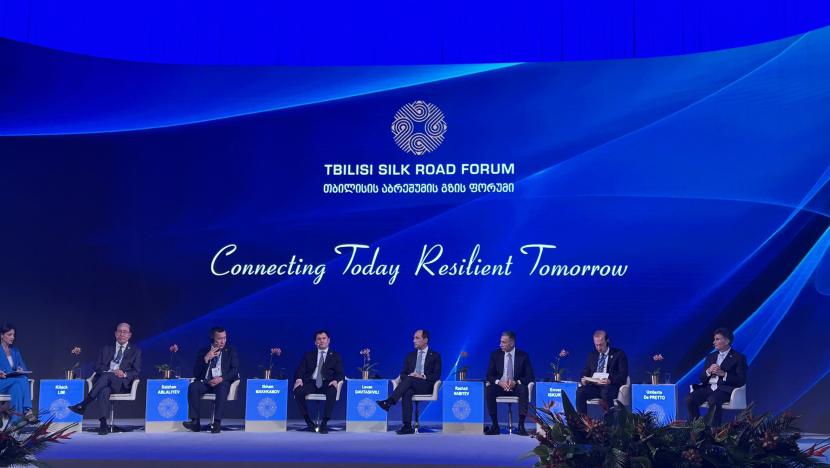The Middle Corridor reduces dependency on traditional transit corridors while offering a faster trade route. How do we maximise its potential? IRU outlined how in Tbilisi, Georgia.
Trade along the transcontinental Middle Corridor is booming.
Connecting China and Central Asia via the Caspian Sea with the Caucasus, Türkiye and Europe, the Middle Corridor is emerging as a pivotal route bridging continents, reshaping the global dynamics of transport and trade.
At the fourth edition of the Tbilisi Silk Road Forum, “Connecting Today Resilient Tomorrow”, in Tbilisi, Georgia, IRU’s Secretary General outlined the potential of the Middle Corridor, the challenges it’s facing due to ever-increasing trade volumes, and solutions to boost its efficiency and security.
On a panel with ministers from Azerbaijan, Georgia, Kazakhstan, Türkiye and Uzbekistan as well as the Secretary-General of the International Maritime Organization, IRU Secretary General Umberto de Pretto said, “The Middle Corridor, the shortest route between China and Europe, is experiencing ever-growing flows of goods.
“From January to August 2023, freight volumes from China to Europe along the Middle Corridor increased by over 80% compared to the same period last year. All signs point to more goods moving through the Middle Corridor in the years to come.”
“We must ensure that the countries and borders along the Middle Corridor can efficiently and securely manage greater volumes,” he added.
IRU has been working with its members and customs authorities to maximise the efficiency and security of borders along the Middle Corridor. The growth in trade volumes is putting pressure on already congested borders, markedly slowing down cross-border transport operations.

